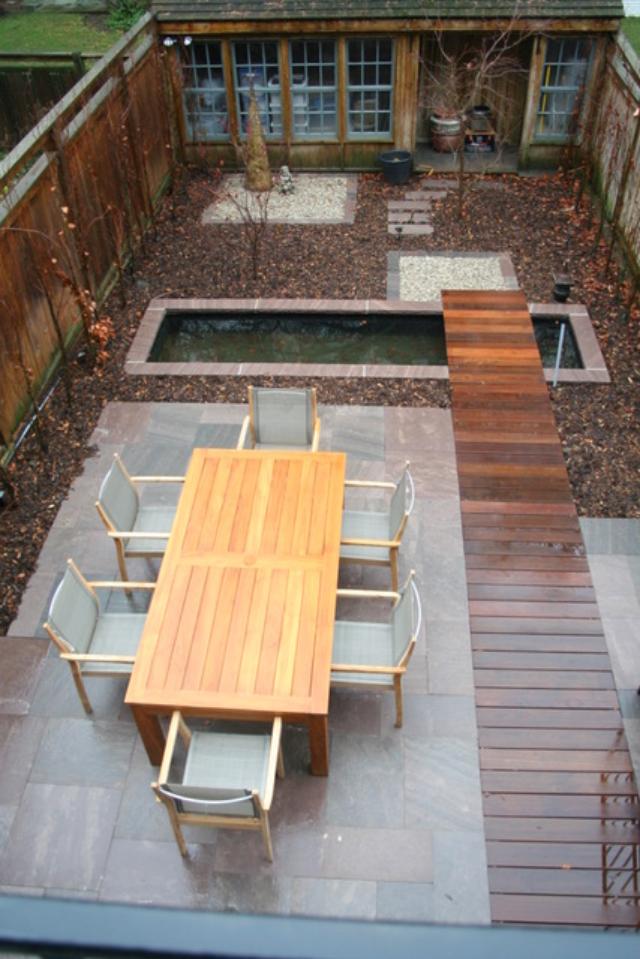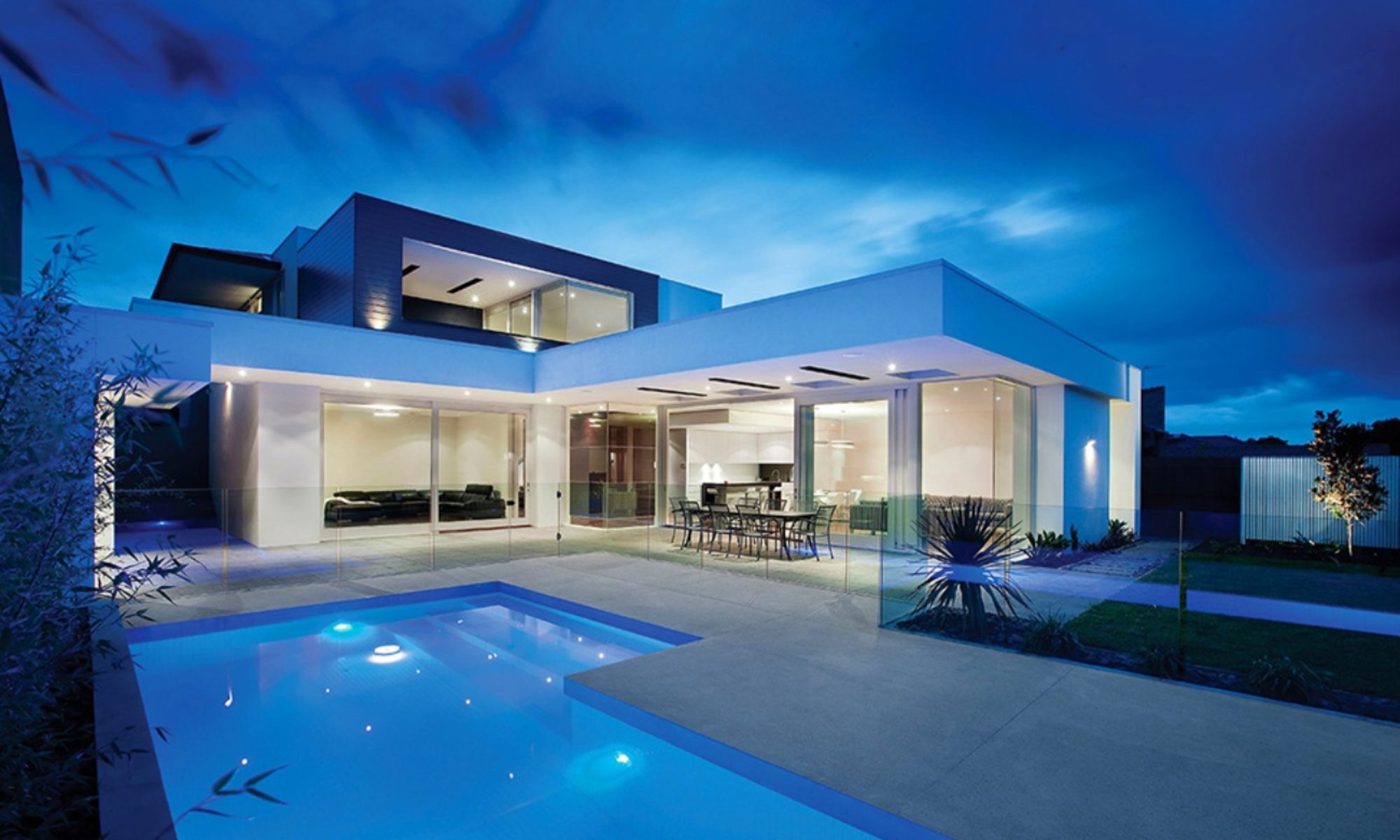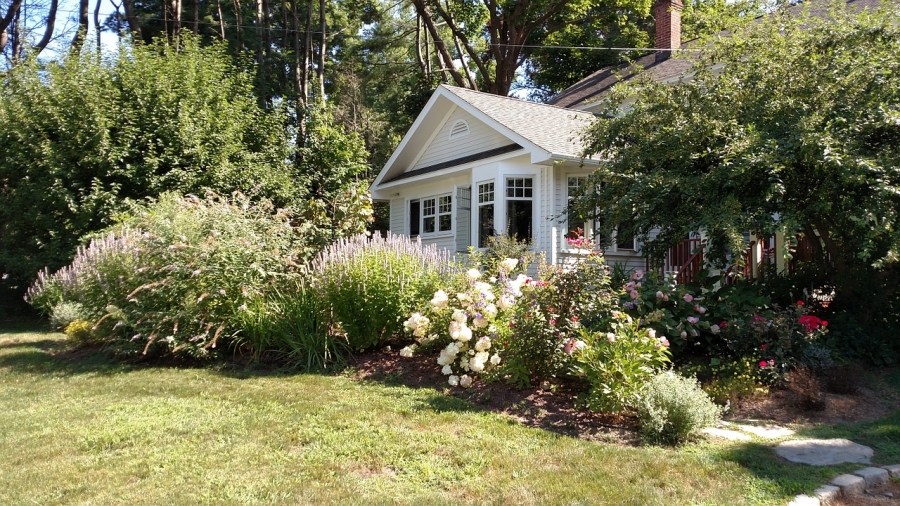You’ve found the home of your dreams. The backyard, not so much. But take heart. There are creative ways to turn that ugly duckling into a beautiful swan by taking the cons and turning them into pros.
If your yard includes the wall of the building next door, a dilapidated garage or parking pad, a lack of privacy, or if you hear vehicle noise, it may seem discouraging. But with proper planning, the negatives can be minimized or even become positives as part of a beautiful landscape design.
You just have to view them as opportunities, says Jennifer Hayman, landscape designer/owner of Jennifer Hayman Design Group in Toronto. “Look at the existing landscape and think of ways to make the most of it.”
Limited space is a common problem for many urban properties, so use every inch by creating multi-purpose areas. For example, redo a parking pad and use it as extra lounge, dining or sports court space when you are entertaining.

The old garage was renovated into a three-season covered loggia and secure, organized storage inside. The columnar beech trees were planted along the fence line for privacy. Photo: Jennifer Hayman Design Group
There’s a trend to demolish neglected, full-to-the-brim-with-junk garages and rebuild them to provide not only organized storage areas, but sitting, dining or hang out spaces. Whether creating a tween or teen retreat, a she shed or a man cave, it’s all about maximizing space that’s already there, the landscape designer says. “Real estate is valuable.”
If the garage is in reusable shape, remove two walls to convert it into a loggia or replace a wall with sliding doors to open it to the outdoors.
If you have another building at the back or side of the yard, put the wall to good use by planting some trees in front of it. Add up lighting.
At night, the light and shadows from the trees against the wall will create a warm ambiance.
Another idea, Hayden says, is to build a free-standing children’s art wall or chalk board in front of it, or if you have permission from the building’s owner, adding a mural may perk up your backyard space.
Use trees to provide privacy from tall buildings. In one of her projects, Hayman planted a row of cedar trees down each side to provide privacy and add a touch of green. Cedar trees also help muffle street noise.
The sound of trickling water is another way to dull the din. She says smaller budgets can employ a “plug and play fountain” while larger projects could include everything from water falls to reflecting pools. It doesn’t have to be a pond. One backyard she designed has a reflecting pool with floating light-up spheres to create nighttime drama.
Grade changes don’t have to be leveled. “It’s not a good use of money,” she says. Use the different levels to create different zones. However, care needs to be taken to ensure water doesn’t flow from your backyard into the neighbours’.
If the existing landscape requires lots of maintenance, a new plan with low-maintenance plants and materials can help reduce the attention it needs. Drought-resistant plants that need less watering are one way to reduce the work. “You can choose materials that are low maintenance, but remember you can’t achieve no maintenance,” she says.
Hayman is a certified Fusion Landscaping Professional. “Fusion Landscaping combines the art and science of horticulture with the science of hydrology to design, build/install and maintain esthetical pleasing, water-efficient landscapes,” says the Landscape Ontario website. “These landscapes use established design principles including form, function and the environment to optimize lot level storm water management and enhance the environment.”

Boardwalk steps over reflective pond and down to garden at lower level. Photo: Jennifer Hayman Design Group
Landscape Ontario, the Region of Peel and Municipality of York combined forces to create the Fusion Landscaping Professional program.
Rain gardens, for example, include plants that can take both lots of water at once but also survive drought conditions, says Hayman. The rain garden is designed so water percolates into the ground instead of on to streets and into sewers.
Incorporating green space is always a good idea. Toronto is a heat island because there is so much concrete.
The city has percentages allowed for hard and softscaping so it’s important to check your local bylaws. Zoning and building department bylaws are something a designer can help with, she says.
Have a professional plan done and approved before construction starts to help optimize your budget. Otherwise, costs can be quickly eaten up on expensive changes made once construction begins.
Having a plan also reduces stress for everyone involved. Ditto for permits. Many contractors won’t work without a permit and a plan with design materials and quantities that have been approved by the homeowner, she says.
If yours is a big job, you may also want to consider 3-D plans, which make it easier to see what the project will look like when it’s finished.
You can “walk” from point A to point B and live inside the space without it being built, she says. “It’s a great tool for contractors to have too so they can understand the landscape designer’s vision. If you’re doing all the bells and whistles, spending $1,500 to $2,000 on 3-D is a fraction of the cost of making construction changes.”
Expect to answer a lot of questions as the landscape designer gathers information to determine the scope of work, the challenges, your needs and wants, and what can be achieved you’re your budget.
After a site analysis, a design is created and presented to the homeowners for feedback. Upon approval, quotes are requested from contractors.
Hayman provides her clients with a vetted list of contractors, chosen based on their skill set. “I match the project to the contractor to the homeowner,” she says. Start three, six or even 12 months ahead of construction, she says, because “contractors who are skilled, competent and strong book up early.”
Remember, there are lots of ways to turn your backyard lemons into lemonade.


